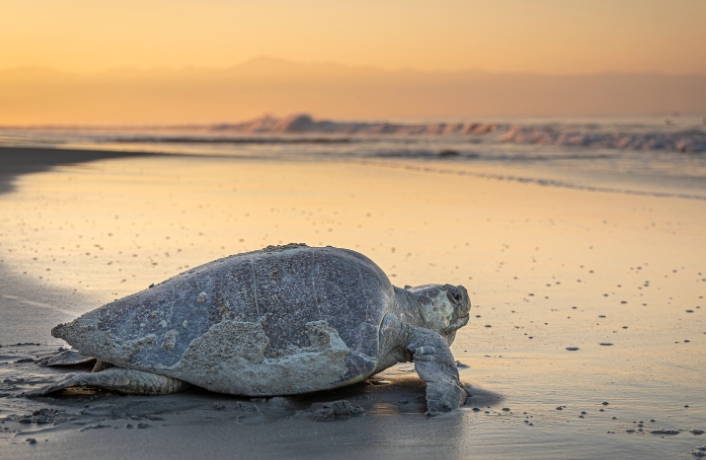The Importance of Turtles in Ecosystems
Are Turtles Important to the Ecosystem? Turtles might seem like slow and passive animals but they play indispensable roles in our ecosystems. They are keystone species, meaning their presence plays a crucial role in maintaining the structure and health of the environment. Let’s dive into the specifics of why turtles are important and how they make such a tremendous impact on both aquatic and terrestrial ecosystems.

Why Are Turtles Considered Keystone Species?
Turtles are considered keystone species because their existence significantly influences the environment and other organisms residing within it. Without them, the ecosystem could undergo drastic changes, potentially collapsing.
Turtles help maintain the balance of multiple food chains. By feeding on various prey, they control the population of these species, preventing overgrowth and imbalance.
Additionally, their eggs and hatchlings serve as a food source for numerous predators, further linking them to their ecosystems’ health. Without turtles, certain species could become overly dominant, causing a ripple effect throughout the ecosystem.
How Do Turtles Contribute to Aquatic Ecosystems?
In aquatic environments, turtles are integral for maintaining biodiversities, such as in oceans, rivers, and lakes. Sea turtles, for example, help control jellyfish populations by consuming them as a primary food source. If jellyfish were to grow unchecked, it could lead to the depletion of zooplankton, which is crucial for the marine food web.
Biodiversity Maintenance: Turtles contribute to maintaining biodiversity by keeping the populations of their prey in check, ensuring no single species dominates the ecosystem.
Habitat Creation: Their nesting behavior helps create habitats for other species. For instance, their eggs provide nutrition for a variety of predators, including raccoons and birds.
What Role Do Turtles Play in Water Quality?
Turtles contribute significantly to water quality. Freshwater turtles play a pivotal role in maintaining clear waters by eating dead fish and debris. This scavenging helps prevent the overgrowth of algae, thereby keeping the water clean.
Natural Cleaners: By consuming dead matter and debris, turtles minimize pollution, contributing to a pristine aquatic environment.
Balanced Ecosystem: By feeding on various organisms, turtles ensure that no single species overwhelms the ecosystem, further promoting overall balance.
How Do Turtles Impact Plant and Algae Growth?
Turtles also play a part in controlling plant and algae growth. Their feeding habits help manage underwater vegetation and prevent overgrowth, contributing to a balanced ecosystem.
Herbivorous Diet: Some turtle species consume large amounts of seagrass, maintaining the health of seagrass beds.
Algae Control: By grazing on algae, turtles help keep algal blooms in check, which otherwise could deplete oxygen levels in the water.
What Is the Importance of Turtles in Terrestrial Ecosystems?
Turtles are equally crucial in terrestrial ecosystems, though their roles might differ from their aquatic counterparts:
How Do Turtles Aid in Seed Dispersal and Vegetation Control?
By consuming fruits and excreting the seeds in different locations, they help propagate various plant species.
Seed Spreaders: Turtles eat fruits and vegetables, excreting seeds that germinate into plants, assisting in plant propagation.
Vegetation Management: By consuming certain plants, turtles prevent overgrowth, ensuring various plant species can thrive.
What Role Do Turtles Play in Soil Health and Nutrient Cycling?
Soil health and nutrient cycling are other areas where turtles have a positive impact. Their burrowing habits aerate the soil, improving its quality and helping other plants grow.
Soil Aeration: Turtles burrow into the ground, which helps aerate the soil and promotes plant growth.
Nutrient Distribution: By decomposing plant material, turtles help cycle nutrients back into the soil, enriching it for other organisms.
How Does the Decline of Turtle Populations Affect Ecosystems?
The decline of turtle populations poses a severe threat to ecosystems. When turtles are removed, the balance they help maintain collapses.
Food Web Disruption: Prey species of turtles often grow unchecked, disrupting the natural food web.
Ecosystem Imbalance: Without turtles, algae and plant growth could explode, causing oxygen depletion in aquatic systems and soil degradation in terrestrial areas.
Loss of Biodiversity: The ripple effect of losing turtles can lead to a decrease in biodiversity, affecting numerous other species dependent on the ecosystem.
Conclusion
In conclusion, are turtles important to the ecosystem? The answer is a big YES. Turtles are not just passive residents of our ecosystems; they are active participants in maintaining their health and balance. From aquatic to terrestrial environments, their roles as keystone species underline their importance. The decline of turtles could trigger a series of catastrophic events, resulting in imbalanced ecosystems.
FAQ
Why does the earth need turtles?
Turtles play crucial roles in maintaining the health and balance of various ecosystems. They control populations of prey species, aid in nutrient cycling, and contribute to biodiversity, making the earth’s ecosystems more resilient.
Are turtles endangered and why?
Yes, many turtle species are endangered due to habitat loss, poaching, climate change, and pollution. Conservation efforts are essential to protect these keystone species from extinction.
